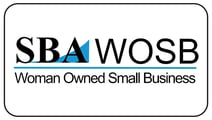 In this edition of HR News You can use we cover a couple of subjects near and dear to our hearts – business travel and how generate better ideas. We all know that business travel is a necessary evil that can be made somewhat better when we can upgrade our seats or earn free flights.
In this edition of HR News You can use we cover a couple of subjects near and dear to our hearts – business travel and how generate better ideas. We all know that business travel is a necessary evil that can be made somewhat better when we can upgrade our seats or earn free flights.
In a well written blog, George Hobica discusses that the changes currently being made at the airlines are going to be taking the joy out of all of our frequent flier programs.
On a lighter note, we all struggle with coming up with creative solutions to the problems facing us in our jobs. Dave Gerhardt, Director of Marketing at Drift.com shares some great tips on how to come up with better ideas.
Why Frequent-Flier Changes Don’t Fly
Asked if loyalty to an airline still pays off, almost 80 percent of poll’s respondents say ‘no.’
By George Hobica Airfarewatchdog.com
Two years ago I got a mailing from American Airlines telling me that if I flew a certain amount within a certain time they’d give me “platinum” status in their Aadvantage frequent flier program. So I took the bait and for a while things were rosy. Free upgrades to business or first class almost every time I flew!
But now, two years later, when I show up at the airport, the upgrade list has 10 to 20 people and on some flights no one gets upgraded. Even spending 15,000 miles and a $75 co-pay to upgrade to business class is getting harder if not impossible unless you’re willing to fly the red-eye flights or the 6 a.m. departures with connecting flights.
But even some of the less desirable perks have been diluted. Priority boarding? Everyone has it now thanks to airline credit cards. It’s a joke.
What’s happened? Airline consolidation means that customers have more combined miles and points to redeem, and more have “status”; airlines have slashed first- and business-class domestic fares, enticing more people to buy them rather than play upgrade roulette; and airlines are offering cheap last-minute “buy ups” to first and business class when you buy an economy airfare.
By 2018, Delta, for example, has stated it aims to sell 70 percent of business- and first-class seats rather than give them away; in 2011 they sold only 31 percent and gave away the other 69 percent to elite fliers.
Other changes have made status and miles harder to earn. Last year United and Delta started to require minimum annual spends to gain elite status; American has since followed suit. In contrast, Jet-Blue still only requires a minimum number of flights and/or points to gain “Mosaic” status in its TrueBlue program; there’s no minimum dollar spend.
Adding insult to injury, American announced in July that it would be awarding as few as 25 percent of miles flown on partner airlines such as British Airways, Alaska and Japan Air Lines, down from 100 percent previously, a move they copied from other major U.S. airlines.
For most fliers, free upgrades are the most valuable benefit of airline loyalty. There are others, of course, such as free checked bags and priority boarding, but you can get those with an airline credit card. But for me, those free upgrades were the only reason to be loyal. And I’m not alone in questioning the value of sticking to one airline. A recent poll we did onAirfarewatchdog.com tells the story: When asked if airline loyalty still pays, almost 80 percent of over 1,500 respondents said “no.”
Have airlines killed the goose that laid the golden miles?
George Hobica is founder of the low-airfare listing website Airfarewatchdog.com.
Here’s How To Consistently Come Up With Better Ideas: Lessons From Ogilvy To Pressfield To Halbert
By: Dave Gerhardt, Director of Marketing at Drift
So I’ve been reading this book by Steven Pressfield called “Nobody Wants To Read Your Sh*t.”
(It’s an amazing title; and it’s true, by the way. I think I’m going to write more on that topic in the future).
Anyway, in the book, he Pressfield talks about how hard it is to come up with new ideas, and this really hit home with me. He says:
“When you try too hard, you have bad ideas. When you work mechanically, you have bad ideas. When you follow formula, you have bad ideas. When you’re desperate or panicky, you have bad ideas.”
You can’t try to come up with good ideas — but there are a few things you can do to put your mind a better place to come up with more ideas.
You can:
- Read more. David Ogilvy said you need to STUFF your conscious mind :)
- Make time to unplug. This is why the good ideas come to you in the shower. Your subconscious.
- Set aside time to write down ideas every day. James Altucher talks about exercising the idea muscle.
- Start keeping a swipe file. All the great copywriters, creative directors, and advertisers always did.
- Don’t force yourself into a schedule. Figure out what works for you.
Here’s a link to the full article I wrote on this topic (going in-depth on each one of those points above for you skimmers out there).
I’d be curious to know if any of these have helped you generate better ideas — other than drinking a half pint of claret like Ogilvy says.
![]()




